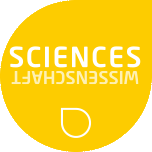As the world’s population ages, the need for bone implants is increasing. Traditional implants present challenges such as risk of infection and rejection, and may require removal surgeries. The TriMaBone project aimed to develop resorbable 3D printable materials for personalized bone implants that promote the natural healing and regrowth of the native tissue. Hans-Peter Deigner, Professor in the Faculty of Medical and Life Sciences at the Hochschule Furtwangen was the scientific leader of the project, and Oliver Riester was a researcher in the consortium.
Population aging leads to an increasing need for effective bone repair materials
Bones in our body possess amazing self-repairing properties. They are continually undergoing a process of regeneration: throughout an individual’s lifetime, old bone tissue is replaced by new one. This process is essential to maintain density and structure, and thus support the biomechanical function of bones. However, as people age, these self-repairing properties deteriorate. With the global population getting older, the prevalence of age-related bone injuries and diseases is expected to rise, creating a growing need for bone implants to replace or support damaged tissue.
Bone implants are used in various medical fields, including orthopedics and dentistry. They are traditionally made of metals, ceramics, or polymers. Metal implants are popular for their strength and durability, but they can lead to complications such as allergic reactions. Ceramics, due to their chemical similarity to natural bone, are an interesting option, however they can be brittle and fracture easily. While polymers are lightweight, flexible and can be manufactured in complex shapes, they are not as strong as metals or ceramics. Although the majority of surgeries are successful, complications such as infection and rejection can occur and require removal operations. To overcome these limitations, biomaterials researchers have started exploring an alternative to replacement: endogenous regeneration, which involves the use of resorbable implants that promote the natural healing and regrowth of the native tissue. To make these resorbable implants more efficient, a major challenge is to develop 3D printable materials that can be used to create personalized implants customized to the specific needs of individual patients.
Chitosan, a promising substance for resorbable 3D printable bone implants
The TriMaBone consortium aimed to “synthesize novel 3D printable polymers, which could fill gaps in bones, and be replaced by original bone material after some time”, says Hans-Peter Deigner. The team studied chitosan, a substance derived from chitin, the structural component of the shells of shrimps and other crustaceans. Four academic partners combined their expertise: the Hochschule Furtwangen analyzed the chemical aspects and biocompatibility of chitosan, the Université de Haute-Alsace was responsible for the chemical functionalization (i.e the modification of the chemical structure of chitosan to alter its properties), the University of Koblenz-Landau worked on the physical properties, and the Fachhochschule Nordwestschweiz contributed its knowledge of 3D printing processes. “Chitosan is fully biocompatible, antimicrobial and is replaced within a reasonable period of time (six months to a year) by the original material, so we have no foreign material in the body in the long term. And it improves and accelerates the healing process”, explains Hans-Peter Deigner. But making chitosan 3D printable was a challenge, as “chitosan degrades before it melts”, adds Oliver Riester. “We had to modify it, in order to obtain the desirable properties for the 3D printing process”.
Future perspectives
The TriMaBone consortium successfully demonstrated that chitosan is a promising material for resorbable implants. Future research is needed concerning 3D printing: “This process depends on material properties that could not be optimized during the project. A little bit of fine tuning is necessary to achieve the 3D printable material. Unfortunately, we were delayed due to the Covid pandemic, so another half year would have been necessary”, states Hans-Peter Deigner.
The TriMaBone project was a significant milestone in the field of bone implants research, paving the way for exciting developments that could lead to improved patient outcomes. For example, the use of resorbable 3D printed bone implants in combination with supportive stem cell therapy has the potential to enhance the effectiveness of bone growth and regeneration. Moreover, by embedding therapeutic macromolecules into the implant itself, the healing process can be improved. With these advances, the future of bone implants looks promising, offering patients more effective and long-lasting personalized solutions for a variety of bone-related medical conditions.
The TriMaBone project (“Trinational research initiative: 3D printing materials for resorbable bone implants”) started in September 2019 and ended in August 2022. Co-funded by the European Union under the Interreg V Upper Rhine programme and by the French and German regional partners of the “Science Offensive” initiative, it brought together four academic partners: Hochschule Furtwangen, Université de Haute-Alsace, Universität Koblenz-Landau and Fachhochschule Nordwestschweiz. The Science Offensive: Based on its success, the initiative is to be continued for the period 2021-2027, for which two calls for projects are planned. Building on the dynamism of cross-border scientific cooperation, the co-financing partners of the Science Offensive now want to support the transfer and exploitation of the results of public research and strengthen the positive effect of scientific findings on businesses and society, for the benefit of the economic, social and ecological development of the Upper Rhine Trinational Metropolitan Region. The fourth call for projects of the Science Offensive has been launched on January 5th 2023 (closing date: 24th of March 2023) and focuses on knowledge and technology transfer while contributing to the objectives of the Trinational Metropolitan Region of the Upper Rhine. You can find all informations on the Science Offensive on the Website of the Science Pillar.
